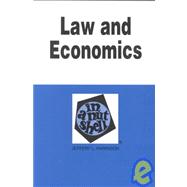| Preface | v | ||||
|
xvii | ||||
|
1 | (6) | |||
|
7 | (21) | |||
|
7 | (8) | |||
|
7 | (4) | |||
|
11 | (3) | |||
|
14 | (1) | |||
|
15 | (5) | |||
|
15 | (3) | |||
|
18 | (2) | |||
|
20 | (6) | |||
|
26 | (2) | |||
|
28 | (31) | |||
|
28 | (9) | |||
|
29 | (2) | |||
|
31 | (4) | |||
|
35 | (2) | |||
|
37 | (2) | |||
|
39 | (4) | |||
|
40 | (1) | |||
|
41 | (1) | |||
|
42 | (1) | |||
|
43 | (7) | |||
|
43 | (4) | |||
|
47 | (3) | |||
|
50 | (9) | |||
|
51 | (2) | |||
|
53 | (1) | |||
|
54 | (2) | |||
|
56 | (3) | |||
|
59 | (26) | |||
|
59 | (8) | |||
|
59 | (4) | |||
|
63 | (2) | |||
|
65 | (2) | |||
|
67 | (3) | |||
|
70 | (3) | |||
|
73 | (6) | |||
|
73 | (5) | |||
|
78 | (1) | |||
|
79 | (6) | |||
|
85 | (63) | |||
|
85 | (11) | |||
|
85 | (7) | |||
|
92 | (2) | |||
|
94 | (1) | |||
|
94 | (2) | |||
|
96 | (16) | |||
|
97 | (3) | |||
|
100 | (2) | |||
|
102 | (2) | |||
|
104 | (8) | |||
|
112 | (16) | |||
|
115 | (6) | |||
|
121 | (7) | |||
|
128 | (13) | |||
|
129 | (4) | |||
|
133 | (3) | |||
|
136 | (2) | |||
|
138 | (3) | |||
|
141 | (7) | |||
|
141 | (3) | |||
|
144 | (4) | |||
|
148 | (41) | |||
|
149 | (2) | |||
|
151 | (4) | |||
|
155 | (2) | |||
|
155 | (1) | |||
|
156 | (1) | |||
|
157 | (3) | |||
|
157 | (1) | |||
|
158 | (2) | |||
|
160 | (5) | |||
|
161 | (3) | |||
|
164 | (1) | |||
|
165 | (1) | |||
|
166 | (16) | |||
|
167 | (4) | |||
|
171 | (6) | |||
|
177 | (2) | |||
|
179 | (3) | |||
|
182 | (7) | |||
|
182 | (1) | |||
|
183 | (4) | |||
|
187 | (2) | |||
|
189 | (31) | |||
|
190 | (18) | |||
|
191 | (6) | |||
|
197 | (8) | |||
|
205 | (3) | |||
|
208 | (12) | |||
|
209 | (6) | |||
|
215 | (5) | |||
|
220 | (34) | |||
|
221 | (25) | |||
|
221 | (4) | |||
|
225 | (3) | |||
|
228 | (4) | |||
|
232 | (3) | |||
|
235 | (2) | |||
|
237 | (3) | |||
|
240 | (3) | |||
|
243 | (3) | |||
|
246 | (8) | |||
|
246 | (1) | |||
|
247 | (1) | |||
|
248 | (1) | |||
|
249 | (2) | |||
|
251 | (1) | |||
|
252 | (2) | |||
|
254 | (38) | |||
|
255 | (16) | |||
|
255 | (4) | |||
|
259 | (10) | |||
|
269 | (2) | |||
|
271 | (3) | |||
|
274 | (3) | |||
|
277 | (15) | |||
|
278 | (2) | |||
|
280 | (4) | |||
|
284 | (8) | |||
|
292 | (33) | |||
|
293 | (5) | |||
|
298 | (5) | |||
|
298 | (3) | |||
|
301 | (2) | |||
|
303 | (2) | |||
|
305 | (11) | |||
|
305 | (4) | |||
|
309 | (7) | |||
|
316 | (9) | |||
|
316 | (3) | |||
|
319 | (2) | |||
|
321 | (4) | |||
| Index | 325 |








